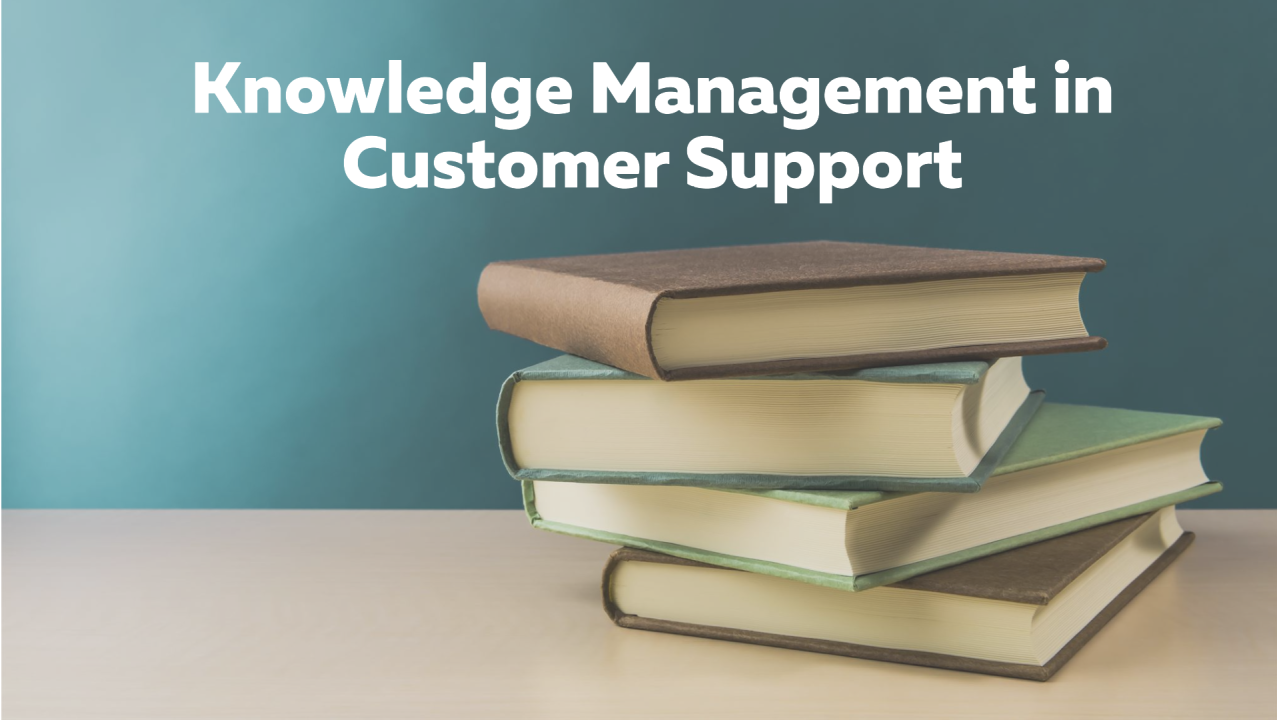Knowledge Management: The Foundation of High-Performing Customer Support Teams

Customer support is the lifeline of an organization’s relationship with its customers. It’s where problems are solved, trust is built, and loyalty is won. While trust, engagement, and alignment lay the cultural foundation for high-performing teams, Knowledge Management (KM) serves as the structural backbone that drives consistency, scalability, and exceptional service delivery.
But KM isn’t just about tools or documentation—it’s a mindset and a strategy. It’s the deliberate cultivation of processes, systems, and habits that empower teams to share, access, and utilize knowledge effectively. Moreover, when paired with concepts like upskilling, career development, and the mindset of “obsoleting yourself,” KM can transform your support team into a powerhouse of innovation, efficiency, and growth.
In this article, I’ll share insights drawn from leading escalation teams in enterprise SaaS environments, along with practical tips on how KM can drive high performance and prepare your team for future challenges.
1. Why Knowledge Management Matters in Support Teams
Let me paint you a familiar picture: It’s Friday at 4:45 PM. The team is wrapping up a long week when a critical customer escalation lands. The stakes are high, the customer is frustrated, and the agent responsible scrambles to find the relevant documentation. Minutes turn into agonizing hours as they sift through outdated knowledge base articles and conflicting internal notes. By the time they resolve the issue, it’s past 6 PM, and both the agent and customer are emotionally drained.
Now imagine a different scenario: The same escalation arises, but the agent confidently searches the knowledge base, quickly finds an up-to-date troubleshooting guide, and resolves the issue with clarity and precision. The customer leaves the call delighted, and the agent wraps up on time with a sense of accomplishment.
The difference? A robust Knowledge Management system that prioritizes accuracy, accessibility, and ease of use.
For Customer Support teams, KM is nothing short of a superpower:
- Faster resolutions: Agents spend less time searching and more time solving problems.
- Consistency: Customers receive the same high-quality answers regardless of who handles their case.
- Empowerment: Teams gain confidence when they know they have reliable resources to lean on.
- Scalability: A solid KM system allows new hires to ramp up faster and enables the team to handle increased demand without sacrificing quality.
2. Building a Living, Breathing Knowledge Base
A knowledge base isn’t a “set it and forget it” asset. To remain effective, it must be treated as a living, breathing entity. Here are some best practices:
* Make It Easy to Access and Search
A good KM system should be intuitive. Invest in tools that allow for robust search functionality, categorization, and tagging. If agents can’t find what they need in seconds, the system isn’t doing its job.
* Keep It Up to Date
Outdated documentation can be worse than no documentation. Establish a routine for reviewing and updating knowledge base articles. Consider appointing a “knowledge champion” within the team to oversee this process.
* Encourage Team Contributions
Your agents are on the front lines. They know what works and what doesn’t. Create a culture where team members feel empowered to suggest updates, flag inaccuracies, and even create new articles. This not only improves the knowledge base but also fosters a sense of ownership.
* Collect Feedback
Encourage agents to rate the usefulness of knowledge base articles. Use this feedback to identify gaps, refine content, and prioritize improvements.
3. Obsolete Yourself: A Mindset for Growth
One of the most transformative concepts I’ve introduced to teams is the idea of “obsoleting yourself.” At first glance, it sounds counterintuitive. Why would anyone want to make themselves redundant? But here’s the magic: When you obsolete yourself, you systematize your knowledge and processes so thoroughly that your role becomes self-sufficient. In doing so, you free yourself to grow, take on new challenges, and advance your career.
What It Means to Obsolete Yourself
- Document Your Knowledge: Capture your expertise in a way that others can easily understand and replicate.
- Automate Routine Tasks: Identify repetitive tasks and find ways to streamline or automate them.
- Train Your Team: Share your knowledge generously, ensuring that others can step into your role seamlessly.
Why It’s Important
- Team Resilience: By spreading knowledge and capabilities across the team, you reduce the risk of bottlenecks and burnout.
- Personal Growth: Once your current role runs smoothly without you, you’re free to pursue higher-level opportunities.
- Culture of Innovation: This mindset encourages continuous improvement and a forward-looking approach.
I’ve seen agents who embraced this mindset transition into leadership roles, technical specialists, and even customer success managers. It’s not about working yourself out of a job; it’s about creating space to grow.
4. Upskilling: Fueling Growth and Retention
While KM captures existing knowledge, upskilling ensures your team is constantly expanding its capabilities. In fast-moving industries like SaaS, continuous learning isn’t optional—it’s essential.
How to Build a Culture of Upskilling
- Identify Skill Gaps: Use performance reviews, customer feedback, and team retrospectives to pinpoint areas for improvement.
- Offer Training Opportunities: Provide access to workshops, certifications, and online courses that align with both individual and team goals.
- Encourage Peer Learning: Create opportunities for team members to share their expertise through lunch-and-learns, shadowing sessions, or mentorship programs.
- Set Personal Development Goals: During one-on-one meetings, discuss each team member’s career aspirations and identify actionable steps to help them get there.
The Career Path Opportunity
Upskilling doesn’t just benefit the organization—it’s a key driver of employee engagement and retention. When team members see a clear path for growth, they’re more likely to stay invested in their roles.
For example, I once worked with an agent who had a knack for solving complex technical issues. By encouraging them to pursue advanced training in API integrations, they eventually became a subject matter expert and a vital resource for both the team and customers. That’s the power of aligning upskilling with career development.
5. Knowledge Management as a Team Sport
KM isn’t the sole responsibility of a knowledge manager or a team lead. It’s a collective effort. When everyone contributes to and benefits from the system, it becomes a shared resource that elevates the entire team.
How to Foster a Collaborative KM Culture
- Recognize Contributions: Celebrate team members who create or improve knowledge base articles.
- Incentivize Participation: Consider gamifying the process by awarding points or badges for contributions.
- Integrate KM into Daily Workflows: Make it easy for agents to document new learnings by integrating KM tools into your existing ticketing system or chat platforms.
- Lead by Example: As a leader, actively contribute to and use the knowledge base. Your actions set the tone for the team.
6. KM’s Role in Driving Customer Experience
When your KM strategy is strong, it doesn’t just benefit the team—it has a direct, measurable impact on the customer experience.
Key Benefits for Customers
- Faster Resolutions: With immediate access to accurate information, agents can resolve issues quickly.
- Higher Accuracy: Consistent documentation reduces the risk of errors and conflicting information.
- Proactive Support: A well-organized KM system enables agents to anticipate customer needs and offer solutions before problems escalate.
When customers feel that their issues are handled efficiently and accurately, their trust in your organization deepens. Over time, this trust translates into loyalty, advocacy, and even increased revenue.
7. The Future of Knowledge Management
As technology evolves, so does the potential of KM. AI-powered tools are already revolutionizing how support teams manage knowledge, from predictive search to automated content generation. However, even the best technology can’t replace the human element.
Key Trends to Watch
- AI and Machine Learning: Tools that analyze customer interactions to identify knowledge gaps or suggest relevant articles in real time.
- Collaborative Platforms: Integrating KM with tools like Slack or Microsoft Teams to make sharing and accessing knowledge seamless.
- Personalization: Tailoring knowledge base content to specific user roles or customer segments for greater relevance.
Conclusion: Building the Foundation for Success
Knowledge Management is more than a process—it’s a cornerstone of high-performing support teams. By creating a living, collaborative KM system, encouraging upskilling, and adopting a mindset of obsoleting yourself, you can build a team that not only excels today but is prepared for the challenges of tomorrow.
As support professionals, our ultimate goal is to empower both our customers and our teams. With the right KM strategy, you can create an environment where knowledge flows freely, careers thrive, and customers leave every interaction delighted. And isn’t that what exceptional support is all about?

